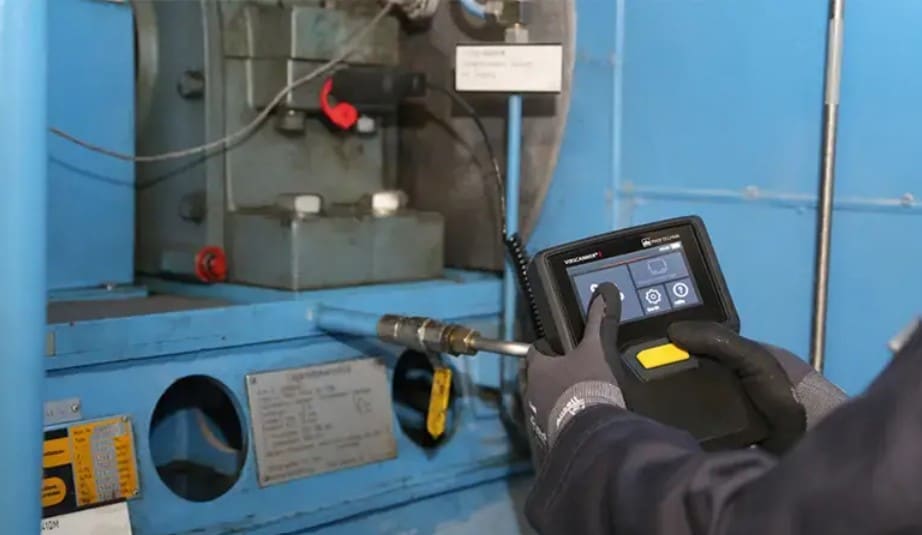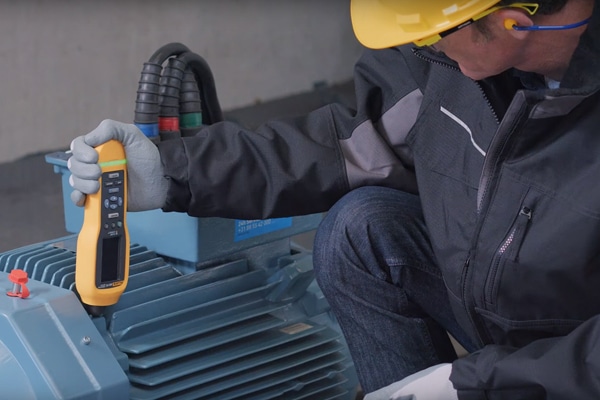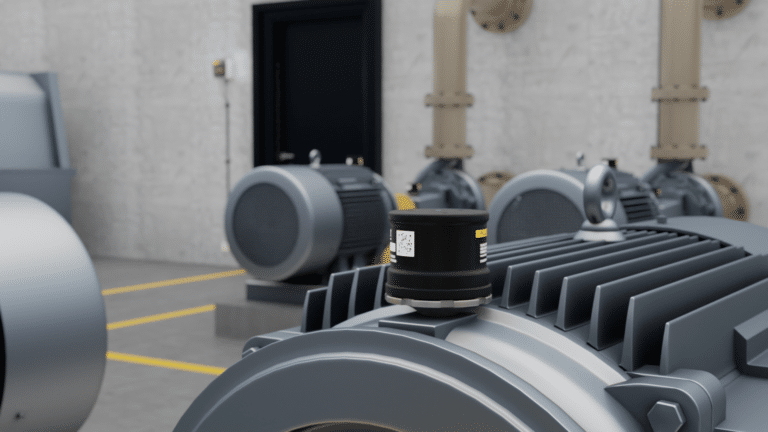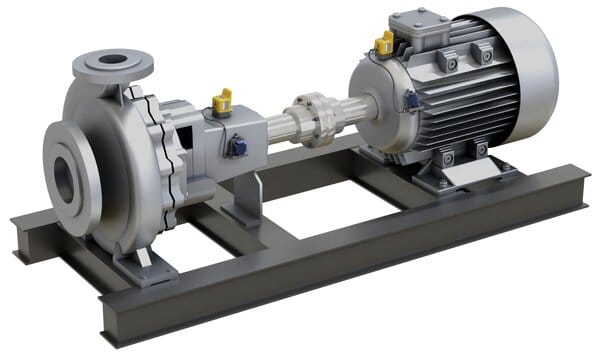Vibration meters are frontline screening tools used for condition monitoring and diagnosing machine faults. Used correctly, the right vibration meter can improve productivity and increase uptime, making it possible for maintenance teams to focus their efforts where they are most needed.
We’ll talk about exactly what a vibration meter does, and why it is such an important tool for measurement and assessing machine health. We’ll also discuss different types of vibration monitoring tools and explain what to look for in a high-quality vibration meter.

What Is Vibration Monitoring?
Every piece of rotating equipment vibrates while it operates. Some level of vibration, or oscillation, is completely normal.
But when an asset becomes unbalanced, develops wear and tear, or has a bearing fault, its vibration levels will change. The asset may start to vibrate at a higher frequency, or the level of displacement may increase.
A high-quality vibration meter can pick up tiny changes in vibration levels that human senses would not notice. Those tiny changes are usually the first indicators of a developing fault in the equipment. The sooner the fault is detected, the more easily the maintenance team can correct the problem.
Catching faults early saves on maintenance costs and means that repairs can be scheduled at a convenient time, instead of bringing your entire operation to a halt.
What Does a Vibration Meter Do?
A vibration meter is a handheld device with a built-in vibration sensor and a display screen. It is used to check vibration levels of an asset or a component part.
Meters provide an instant reading of vibration velocity, acceleration, and displacement. The best vibration meters can also check equipment temperature and bearing condition.
Most modern vibration meters store vibration measurements, so that technicians can easily access a particular asset’s history and spot changes from normal patterns.
Some vibration monitors can also share vibration data so that teams can access it remotely, by smartphone or tablet.
Why Are Vibration Meters Important?
Vibration meters help drive smarter decision making.
They provide an instant read of the health of each of your assets, so that you can make immediate, data-backed decisions about maintenance and repairs. They also facilitate communication between frontline workers and decision makers, by making it easy to share data.
If you catch machine faults early on, you’ll never be caught off-guard by a sudden, unexpected failure. Instead, you’ll be able to allocate your maintenance resources carefully so that you can always keep your operation up and running at maximum productivity.

How Do You Use Vibration Meters?
There are a few different approaches to using vibration meters.
You can have your maintenance team do route-based vibration monitoring, on whatever schedule makes sense to you. Routinely checking on vibration levels is a great way to scan the horizon so that you always know about any looming issues in your plant.
If you don’t have the resources for route-based monitoring right now, you can also use a vibration meter more selectively. Your maintenance teams can use the meter as a screening diagnostic tool, to pinpoint the problem with an asset that isn’t functioning correctly.
A good vibration meter provides repeatable readings of vibration, bearing health, and overall machine health. It’s hard to beat as a troubleshooting tool.
What’s the Difference Between a Vibration Meter and a Vibration Monitor?
Vibration meters and vibration monitors have similar functions. They are both used to check on the vibration levels of your assets.
Vibration monitors are typically mounted on your assets so that they can track vibration levels on a continuous basis. Vibration meters are handheld devices used to spot-check vibration levels of a particular asset.
Working with the Fluke 805 FC Vibration Meter
The Fluke 805 FC Vibration Meter is straightforward and intuitive to operate. It measures vibration levels, bearing health and overall machine health.
Even teams without much technical training can use the tool easily. The display uses clear language – readings will say either “good,” “satisfactory,” “unsatisfactory,” or “unacceptable.”
It’s also designed to integrate with the Fluke Connect Mobile App, so that you can create work orders and develop maintenance schedules from the field, or from a remote location.
You’ll also be able to share date through the app or export your data through USB.
The Fluke 805 produces accurate, reliable results with every reading. Its data quality is consistent at both low and high frequency ranges, making it a great tool for almost any asset in your plant. The tool automatically stores data so that you can compare it against the machine’s historical vibration data. You can also easily compare it against ISO severity scales.
The meter comes with an optional external accelerometer so that your team can easily take readings even in hard to reach spots. And it has a built-in flashlight so that you’ll always be able to read your data even in dark corners.
The result? A tool that’s easy to use and that will facilitate troubleshooting and problem-solving. Using a vibration meter will help your team build an effective, proactive maintenance strategy – leading to more uptime and greater productivity.






